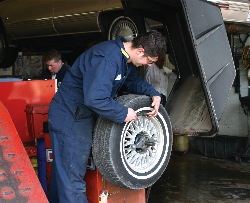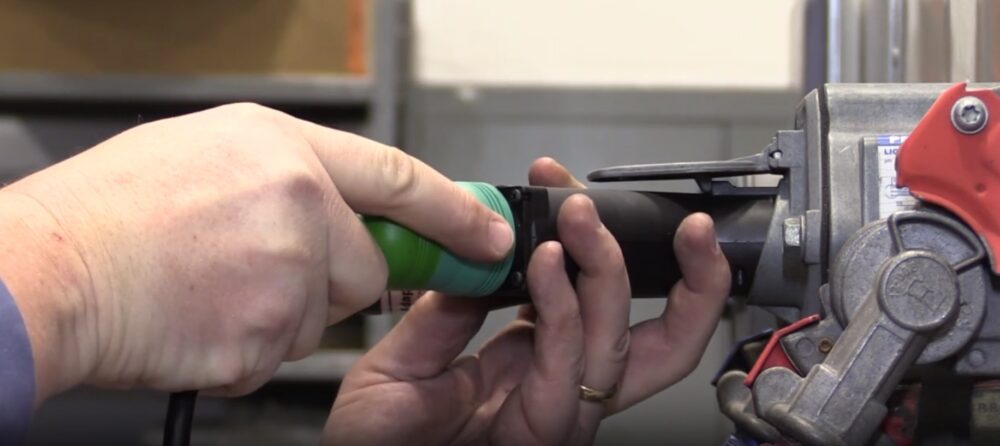 Proper tire/wheel assembly balancing is important for vehicle safety. Balanced tires can mean the difference between a positive and negative driving experience. Especially in high-speed driving, improperly balanced tire/wheel assemblies can cause a vehicle to lose stability and operate in an unsafe — and uncomfortable — manner. Vibration, the most noticeable effect of imbalance, often first becomes apparent between 40 and 45 mph and increases with greater speeds. Drivers of high performance vehicles will be more sensitive to imbalance problems, but no driver is happy with an annoying vibration.
Proper tire/wheel assembly balancing is important for vehicle safety. Balanced tires can mean the difference between a positive and negative driving experience. Especially in high-speed driving, improperly balanced tire/wheel assemblies can cause a vehicle to lose stability and operate in an unsafe — and uncomfortable — manner. Vibration, the most noticeable effect of imbalance, often first becomes apparent between 40 and 45 mph and increases with greater speeds. Drivers of high performance vehicles will be more sensitive to imbalance problems, but no driver is happy with an annoying vibration.
Static wheel balancing that uses a single weight plane and only addresses up-and-down imbalance is simply not adequate for today’s wheel vibration-sensitive vehicles. So, tire dealers and repair shops have installed spin-balancing machines to provide dynamic wheel balancing.
These machines measure two weight planes to eliminate side-to-side as well as up-and-down imbalance. The most sophisticated balancers now available can simulate a road test to identify and correct the lateral forces that lead to “tire pull.” This condition, created as the tire rolls along the road, makes a vehicle steer away from straight ahead. It is hard to detect during standard balancing or alignment service. Balancers equipped to measure these road forces cost more, but keep in mind when replacing tires, some imported luxury autos now require road force balancing to minimize vibration at high speeds.
When shopping for a balancer, consider the features that will help to minimize downtime, maximize technician productivity and deliver years of dependable service. Standard features on basic units include multiple static, dynamic and alloy wheel balancing modes, self-calibrating drive systems and centering check. Premium features can include color LCD displays with real-time 3-D animated graphics and visual cues, top and bottom dead-center lasers to automatically locate wheel weight position, VIN/TPMS scan and a printer for sharing information with customers. Higher-end models also can feature automatic wheel clamping, behind-the-spoke and patch-balance modes, a wheel lift, multiple operator pre-sets and tire inflation at the balancer. The most capable balancers can perform radial and lateral runout measurement, detect high spots and measure contact patch, and simulate a road test (wheel vibration and tire pull). Some manufacturers offer free printable posters, counter cards and consumer literature that can be used to promote premium balances and increase revenues.
An industry study shows that 60% of balancing problems could be attributed to improper wheel mounting on the balancer or clamping error. To ensure technicians are trained to use the balancer to its fullest capability, some units have self-training modes.
Accessories, including adapters for passenger cars to medium-duty trucks, are as critical as the balancer itself. A damaged or worn cone, spring or shaft can cause problems. Use the proper adapters and replace them diligently as they wear. This is especially important as more styles and types of wheels and tires enter the marketplace. If the tire-and-wheel assembly can’t be properly mounted to it, even the most advanced balancer won’t perform properly.
While automation is more costly, it increases accuracy, productivity and profitability. Helping to get balancing right the first time reduces costly comebacks, and the smooth ride that comes from proper tire and wheel balancing increases customer satisfaction.


